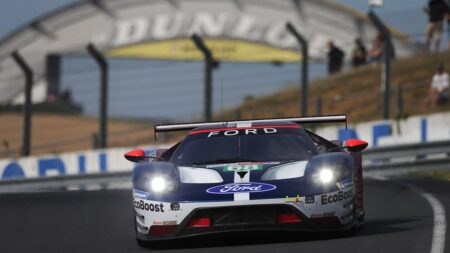
McLaren wants to win 2027 Triple Crown with Le Mans Hypercar
McLaren will enter the Le Mans Hypercar class for the very first time in 2027 – and is gunning to win motor sport's 'Triple Crown' all in one year
Finally some specifics – this is the future of the World Endurance Championship
The World Endurance Championship’s pivotal 2020 regulations have been agreed by the FIA at the World Motor Sport Council meeting, as the series’ top class prepares to move to the much-vaunted hypercar concept.
The as-yet unnamed class – fans will be consulted here – is hoped to attract manufacturers such as Aston Martin and McLaren, with Toyota already expressing its interest.
As explained in the current issue of Motor Sport, the quick turnaround of a September 2020 opening round could limit how many ‘hypercars’ will be on the grid in year one.
Cost control is a key part of the series’ future direction, limiting budgets to 20 million euros. This is to include a 3 million euro 200kW hybrid system, which will power only the front axle. Manufacturers will be encouraged to make the units more widely available. Engine output is expected to be 508kW (680bhp).
But IMSA has already distanced itself from the regulations, congratulating the ACO and FIA but reiterating that its ruleset continues through 2021. “There is time for current and potential DPi manufacturers to evaluate these [WEC] regulations as we look ahead to any possible evolution of the current platform,” said president Scott Atherton.
IMSA’s budget DPi platform of manufacturer-tweaked bodywork bolted to LMP2 chassis has proved successful since its launch and gained manufacturer support. Cost reservations have proved the sticking point in aligning IMSA and the WEC.
More: Giving independents a chance
Moveable aero is also to be introduced in the 2020 WEC regulations, with two devices allowed that must be controlled by the driver, and success ballast is hoped to keep dominance in check. A maximum of 50kg will be carried, with 0.5kg added per scored championship point. This will be scrubbed at Le Mans, the season finale and crown-jewel race.
Success ballast will be introduced sooner than 2020, as next year’s GTE class race winners will be handed 15kg for the following two races, second and third will receive 10kg and 5kg respectively.
For homologation, manufacturers must build 25 road cars and engines in the first year, with 100 built by the end of season two. Likewise, 25 road cars must feature the car’s hybrid system in the first year, and 100 in year two.
To reduce costs and extend manufacturers’ value, homologation will last five years.
Minimum weight has been declared as 1040kg.
The ACO is targeting a qualifying time of 3min 22sec in 2020, which is three seconds quicker than the current LMP2s and more than seven seconds slower than Kamui Kobayashi’s blistering LMP1 pole lap from 2017. Race laps are expected to be around the 3min 27sec mark, 10 seconds slowed than Sebastien Buemi’s fastest lap of 2018.

McLaren will enter the Le Mans Hypercar class for the very first time in 2027 – and is gunning to win motor sport's 'Triple Crown' all in one year

A Ford GT40 MkII which managed 12 laps at the famous 1966 Le Mans 24 Hours has become been auctioned for a record amount

Two of racing's biggest rivals are on collision course once more, with the Ford v Ferrari battle for overall Le Mans victory due to resume in 2027 after six decades — and Ford is already talking up the fight

Ford will develop a new top-tier sports car to compete for overall victory in the Le Mans 24 Hours and the World Endurance Championship Hypercar class from 2027 onwards, aiming to continue where its GT40 left off in the 1960s